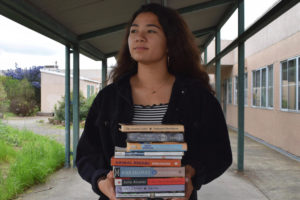Accurate Representation
April 5, 2019
Within a usual classroom setting on campus, teachers emphasize the importance of women and their roles in society by integrating it in their teaching curriculums, which have become significantly more diverse and inclusive of gender minorities. Although men seem to have always dominated the spotlight for centuries in historical texts, that has not restricted teachers from adequately dedicating time to value the significance of “herstory” within social studies and literature. The English and Social Studies departments accurately calibrate respect to both men and women — making diversity one of the main focuses in their respective teachings.
The visibility of women throughout English courses has undoubtedly become more prevalent than ever before with students studying famous novels consisting of strong female protagonists such as “Their Eyes Were Watching God,” “The Scarlet Letter,” “The Awakening,” “Pride and Prejudice,” “The Odyssey,” “The Glass Menagerie,” “To Kill a Mockingbird,” and more. While shedding light upon serious controversial topics like racism and sexism, students are exposed to narratives from when women were ruled and oppressed by a hegemony driven by males. Take, for example, “Their Eyes Were Watching God,” in which Janie, a black woman living in the South during the twentieth century, encounters abusive relationships where she is manipulated into allowing herself to be mistreated by her lovers during the course of her life, all while finding happiness in the process. These books cover a plethora of social and political themes such that are often topics of discussion for Socratic seminars: gender roles, inequality, individuality, conformity, marriage, etc.
With respect to understanding the perspectives from women, English teacher Cassandra Bacho instructs her AP Literature and Composition students to analyze novels like “Things Fall Apart” from a feminist perspective. This strategy is implemented to strengthen students’ philosophical skills at examining and pointing out cultural customs and whether there are certain ideas within a culture essentially perpetuating inequality of the sexes or reinforcing male dominance. This hands-on evaluation through a feminist lens can help provide a historical background to the women’s rights movement and on the topic of women’s issues, effectively expanding the knowledge and sensitivity of students to these situations. These lessons also incorporate current social and political issues into the themes of the content, which helps students relate to their education by making connections between life and literature. Not only does this method introduce students to a feminist mindset, but it also teaches students ways that they can be more critical of the media they consume.
Although diversity is something that must constantly be worked on and improved by society, the inclusion of women in American education, both in English and social studies, is undeniably more prevalent today than ever before.


